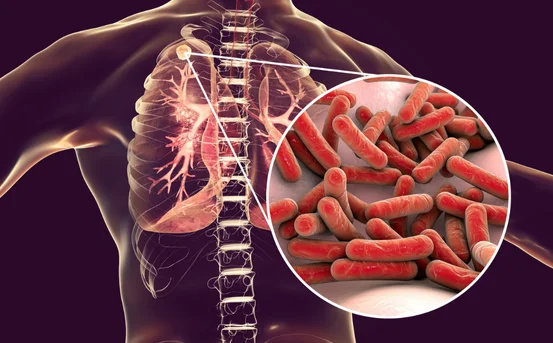Balloon Sinuplasty surgery is a modern, minimally invasive procedure that gently opens blocked sinus passages using a small balloon catheter, helping restore normal airflow and drainage without the need for cutting or removal of tissue. It’s often described as a game-changer for those with chronic sinus issues who want a safe, fast-recovery alternative to traditional sinus surgery. For many, over-the-counter medications, antibiotics, nasal sprays, and steam inhalation offer only temporary relief. But when these treatments stop working or the symptoms keep returning, it’s time to consider a more effective, long-lasting solution and that’s where Balloon Sinuplasty surgery comes in.
Chronic sinusitis can severely affect your quality of life. Constant congestion, facial pain, headaches, and nasal drainage can make daily activities exhausting. If you’ve tried medications and home remedies with no lasting relief, your ENT specialist might recommend Balloon Sinuplasty surgery a modern, minimally invasive treatment option for sinus problems.
What is Balloon Sinuplasty Surgery?
Balloon Sinuplasty (also known as balloon catheter dilation surgery) is a minimally invasive procedure used to treat chronic sinusitis — a condition where the sinuses become inflamed and swollen, causing blockages that lead to pain, congestion, and infection.
Approved by the FDA in 2005, Balloon Sinuplasty has revolutionized sinus treatment by providing a non-surgical alternative to traditional sinus surgery. Instead of cutting or removing bone or tissue, this technique uses a small, flexible balloon catheter to gently widen blocked sinus passageways, allowing for normal drainage and improved airflow.
Why is Balloon Sinuplasty Performed?
Balloon Sinuplasty is typically recommended for patients who have :-
-
Chronic sinusitis that doesn’t respond to medication
-
Recurrent sinus infections
-
Frequent headaches or facial pressure
-
Nasal congestion lasting more than 12 weeks
-
Difficulty breathing through the nose
It’s often chosen when antibiotics, nasal corticosteroids, decongestants, and other conservative treatments have failed.
How Does Balloon Sinuplasty Work?
Here’s a step-by-step look at the Balloon Sinuplasty procedure :-
-
Preparation :-
The patient may be given a local or general anesthetic depending on the severity of the blockage and the setting (clinic or operating room). -
Balloon Insertion :-
A thin, flexible tube with a balloon at the tip (balloon catheter) is carefully inserted into the affected sinus opening using an endoscope. -
Inflation of the Balloon :-
Once in place, the balloon is slowly inflated to gently expand the blocked sinus opening. This process typically takes a few seconds. -
Drainage Restoration :-
The balloon widens the sinus passage and helps reshape it permanently. Saline solution may be used to flush out mucus or pus. -
Deflation and Removal :-
The balloon is then deflated and removed, leaving the sinus passage open and unobstructed.
The entire procedure usually takes about 30 to 60 minutes, and many patients can go home the same day.
Benefits of Balloon Sinuplasty
Balloon Sinuplasty offers several advantages over traditional sinus surgery :-
Minimally Invasive
No cutting of bone or tissue is involved. This reduces trauma, bleeding, and post-operative discomfort.
Quick Recovery Time
Most patients return to normal activities within 24 to 48 hours.
Performed Under Local Anesthesia
Balloon Sinuplasty can often be done in a clinic setting using local anesthesia, reducing the risks associated with general anesthesia.
Low Risk of Complications
Since the anatomy is preserved, the chances of scarring or long-term side effects are significantly reduced.
Improved Quality of Life
Patients often report better breathing, fewer sinus infections, and improved sleep and productivity after the procedure.
Who is a Candidate for Balloon Sinuplasty?
You may be a good candidate for Balloon Sinuplasty if you :-
-
Have had chronic sinusitis for more than 12 weeks
-
Experience recurring sinus infections (four or more times a year)
-
Are not responding to medication or lifestyle changes
-
Have mild to moderate sinus obstruction
It may not be suitable for patients with nasal polyps, severe anatomical abnormalities, or extensive sinus disease. In such cases, traditional Functional Endoscopic Sinus Surgery (FESS) may be recommended.
A detailed evaluation including a nasal endoscopy and CT scan helps ENT specialists decide if Balloon Sinuplasty is right for you.
Risks and Side Effects of Balloon Sinuplasty
While Balloon Sinuplasty is considered safe, no procedure is entirely risk-free. Some possible side effects and complications include :-
-
Bleeding from the nose (usually mild)
-
Infection or sinus inflammation
-
Facial pressure or discomfort
-
Nasal drainage for a few days post-procedure
-
Rarely, damage to surrounding tissues
These side effects are typically mild and resolve within a few days. Always follow your doctor’s post-operative care instructions closely.
What to Expect After Balloon Sinuplasty?
Here’s what you can expect during the recovery process:
Day 1-2 :-
-
Mild nasal congestion, drainage, or blood-tinged mucus
-
Some facial pressure or swelling
Day 3-5 :-
-
Improved breathing through the nose
-
Less facial discomfort
-
Return to work or daily activities
1-2 Weeks :-
-
Full recovery with minimal discomfort
-
Reduced need for nasal sprays or medications
Your doctor may advise rinsing your nasal passages with saline solution and avoiding strenuous activity for a few days.
Conclusion
If you’re living with chronic sinus pain, pressure, and congestion that just won’t go away, Balloon Sinuplasty may offer the long-lasting relief you’ve been seeking — without the risks and recovery time of traditional surgery.
Balloon Sinuplasty surgery offers an innovative, minimally invasive treatment that restores normal sinus drainage without cutting or removing bone or tissue. It’s a safe, effective alternative to traditional sinus surgery — one that allows for faster recovery, fewer complications, and a return to your daily life in just a day or two. For many patients, it provides significant long-term relief from sinus symptoms with minimal discomfort.























